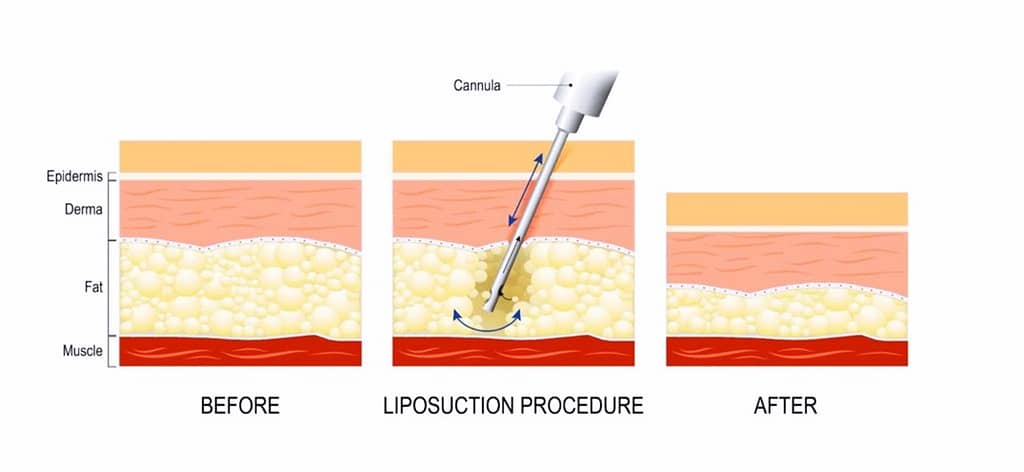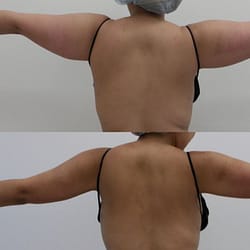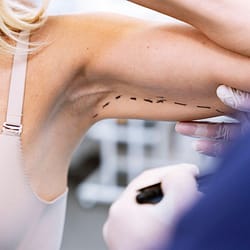Visceral fat is a type of body fat that surrounds your vital organs such as the liver, pancreas, and intestines. Unlike subcutaneous fat, which lies just beneath the skin, visceral fat poses a serious health risk as it can lead to various health conditions such as diabetes, heart disease, and stroke.
If you are struggling to lose visceral fat through diet and exercise, liposuction might be an effective solution. In this article, we will explore the benefits and risks of liposuction for visceral fat, and discuss who is a suitable candidate for the procedure.
Table of Contents
What is Liposuction?
Liposuction is a cosmetic surgery that removes unwanted fat from specific areas of the body. This procedure can help contour your body by removing stubborn pockets of fat that are resistant to diet and exercise. Liposuction can be performed on various parts of the body, including the abdomen, thighs, hips, arms, and back.
There are different types of liposuction available, including tumescent liposuction, ultrasound-assisted liposuction, and laser-assisted liposuction. Your doctor will recommend the most appropriate type of liposuction based on your individual needs and goals.
How does Liposuction help with Visceral Fat?
Liposuction can effectively remove visceral fat from your body, leading to improved health outcomes. The procedure involves making small incisions in the targeted area and inserting a thin tube called a cannula. The cannula is then used to suction out the excess fat.
While liposuction is not a weight-loss procedure, it can help you achieve a more toned appearance and reduce the amount of visceral fat in your body. Studies have shown that liposuction can lead to a significant reduction in visceral fat, resulting in improved insulin sensitivity and reduced risk of cardiovascular diseases.

Who is a Candidate for Liposuction for Visceral Fat?
Not everyone is a suitable candidate for liposuction for visceral fat. Ideal candidates for the procedure are those who are at or near their target weight, have good skin elasticity, and have been unable to lose visceral fat through diet and exercise.
Before undergoing liposuction, you will need to schedule a consultation with a qualified plastic surgeon. During this consultation, your doctor will evaluate your medical history, overall health, and assess whether you are a good candidate for the procedure.
Risks and Complications Associated with Liposuction for Visceral Fat
As with any surgery, liposuction carries some risks and complications. Common side effects of liposuction include swelling, bruising, and temporary numbness in the treated area. In rare cases, serious complications such as infection, blood clots, or organ damage may occur.
It is vital to follow all post-operative care instructions provided by your surgeon to minimize the risk of complications and ensure a smooth recovery.
Recovery After Liposuction for Visceral Fat
Recovery after arm liposuction for visceral fat typically takes a few weeks, during which you will need to take time off work and other activities. Your surgeon will provide you with detailed post-operative care instructions, including information about how to care for your incisions, when to resume physical activity, and what to expect during recovery.
While recovery times vary from person to person, it is essential to give yourself enough rest to allow your body to fully heal. You may experience some discomfort or pain during the first few days after surgery, which can be managed with medication prescribed by your surgeon.

Cost of Liposuction for Visceral Fat
The cost of liposuction for visceral fat varies depending on several factors such as the location of the clinic, the experience and qualifications of the surgeon, and the extent of the procedure. On average, the cost of liposuction for visceral fat can range from $3,000-$10,000.
During your consultation with a plastic surgeon, you will receive a detailed quote that outlines all of the costs associated with the procedure. It is important to note that most insurance providers do not cover the cost of elective cosmetic surgeries such as liposuction.
Alternatives to Liposuction for Visceral Fat
If you are not a suitable candidate for liposuction or prefer non-surgical options, there are alternative treatments available. These include lifestyle changes such as diet and exercise, as well as non-invasive procedures such as CoolSculpting and SculpSure.
Diet and exercise are always recommended as the first line of defense against visceral fat. A healthy, balanced diet combined with regular exercise can help reduce the amount of visceral fat in your body and improve overall health outcomes.
Non-invasive procedures such as CoolSculpting and SculpSure use targeted cooling or heat to destroy fat cells in specific areas of the body. While these treatments are less invasive than liposuction, they may not be as effective for removing significant amounts of visceral fat.
Is liposuction for visceral fat painful?
You may experience some discomfort or pain during the first few days after surgery, which can be managed with medication prescribed by your surgeon.
How long does recovery take after liposuction for visceral fat?
Recovery times vary from person to person, but typically take a few weeks. Your surgeon will provide you with detailed post-operative care instructions.
Can liposuction for visceral fat help with weight loss?
Liposuction is not a weight-loss procedure, but it can lead to a reduction in visceral fat and improved health outcomes.
How much does liposuction for visceral fat cost?
The cost of liposuction for visceral fat varies depending on several factors such as the location of the clinic, the experience and qualifications of the surgeon, and the extent of the procedure. On average, the cost can range from $3,000-$10,000.
What are the alternatives to liposuction for visceral fat?
Alternatives include lifestyle changes such as diet and exercise, as well as non-invasive procedures such as CoolSculpting and SculpSure.
Is liposuction for visceral fat covered by insurance?
Most insurance providers do not cover the cost of elective cosmetic surgeries such as liposuction.
How long does the liposuction procedure take?
The length of the procedure varies depending on several factors such as the extent of the procedure and the type of liposuction used. On average, the procedure can take 1-2 hours.
What is the recovery time for liposuction for visceral fat?
Recovery times vary from person to person, but typically take a few weeks. Your surgeon will provide you with detailed post-operative care instructions.
What are the risks associated with liposuction for visceral fat?
Risks include swelling, bruising, temporary numbness, infection, blood clots, or organ damage. It is important to follow all post-operative care instructions provided by your surgeon to minimize the risk of complications and ensure a smooth recovery.
Can liposuction for visceral fat be combined with other procedures?
Yes, liposuction for visceral fat can be combined with other procedures such as abdominoplasty (tummy tuck) for more dramatic results.
Visceral Fat Article Conclusion
Liposuction for visceral fat can be an effective solution for those struggling to lose stubborn fat in their midsection. The procedure can lead to improved health outcomes and a more toned appearance. However, as with any surgery, there are risks and complications associated with liposuction, and it is essential to weigh these carefully before making a decision. It is also important to consult with a qualified plastic surgeon to determine whether you are a suitable candidate for the procedure.






